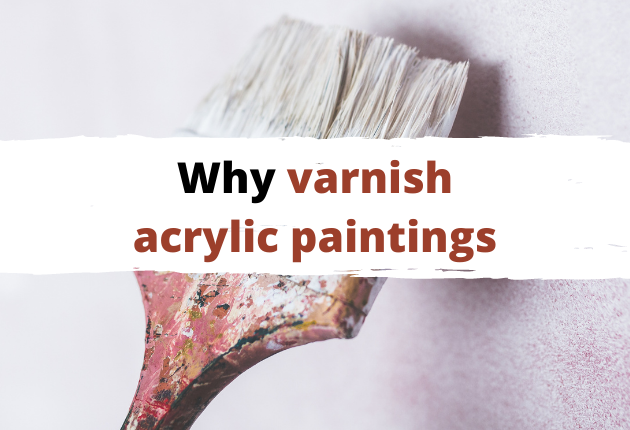Last Updated on March 20, 2024 by Masha Eretnova
Varnish is the final step for painting. When I just started I was terrified – there were so many contradictory posts about varnishing but all of them said, you could probably ruin your painting…Wait, what?
You probably wondering: Should I varnish my acrylic painting at all? The short answer is that you don’t have to varnish acrylic paint but it is recommended to protect it from dust, UV rays, water, scratching, and yellowing.
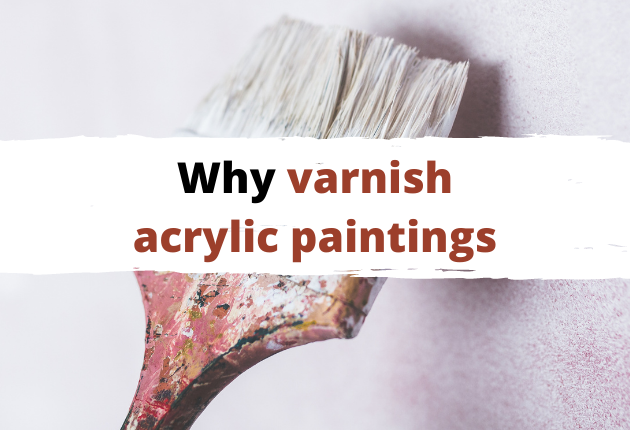
You absolutely should varnish your finished acrylic painting if you’re planning to sell or exhibit it.
Even though, the Smithsonian Institution doesn’t recommend varnishing acrylic paintings, it is actually vital to apply a protective finish over your acrylic work to save it from UV and time.
Here is why I decided to share with you all I know and research to make sure you are not scared anymore.
Table of Contents
This article contains affiliate links. It means no extra cost for you but a little commission (2-3%) for me to support my hobby and blog. Thank you!
Start painting today: How to Paint with Acrylics on Canvas: 3 Easy Steps [Supplies included]
What is varnishing?
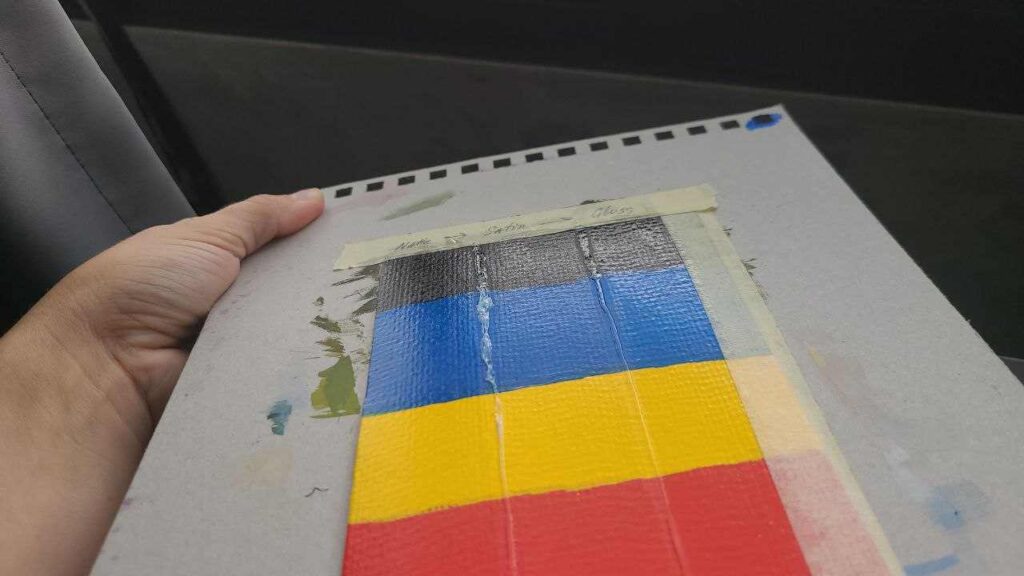
A varnish – is a transparent protective layer on our painting. It forms a hard, clear, shiny surface when dry.
Varnishing an acrylic painting means covering a finished and completely dried ( ±24 hrs.) painting with several coats of varnish.
Varnish layer should go over isolation coat to avoid any surprises!
8 Reasons to Varnish Your Acrylic Painting.
First of all, varnish is not mandatory but a recommended way to protect your acrylic painting.
An alternative ways to varnishing are placing your painting under glass or leaving it without varnish.
Fun fact: Pissaro and Monet preferred the unvarnished look as many Impressionists. Picasso and Van Gogh also didn't like to varnish their paintings. To be honest, preparing the canvas or wood is as important as protecting it after painting. Learn how to prime wood or gesso a canvas if you are about to start a new artwork.
1 – Varnish protects from the dust
During the drying process and even being fully dried, acrylic paint stays soft and allows dust and dirt to adhere to the painting surface.
As we remember, acrylics are water-based and the drying process is the simple process of water evaporation.
When water evaporates, the other ingredients of the paint, such as agents and mostly binder (polymer) join together to form a film.
But while drying small pores appear. These micropores are very happy to collect dust. This is why varnish can save us – it creates a non-porous hard coat!
This is how much dirt can collect varnish over time.
We can also see that it’s yellowing and why it is important both to apply and to remove and replace varnish when the time comes to protect and save our paintings for 100 years.
Pro Tip:
Take photos and notes to know exactly when you varnished your painting and what varnish you used.
When you will need to remove it, you will read the brand’s instructions.
Plus, looking at photos you can directly tell if it is time to replace the varnish.
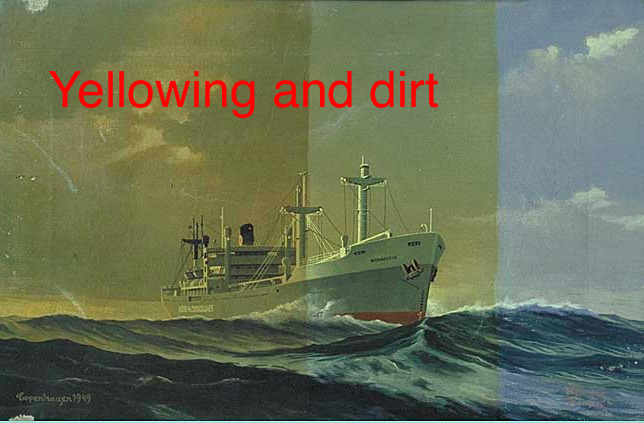
If you choose to varnish your acrylic painting, you don’t have to put your painting under the glass. Painting without glass looks more natural and modern for me.
I also don’t like the glare that glass gives while you look at the painting.
2 – Varnish protects from the changes in the environment
A dried varnish is a hard protective layer, it is harder than cured acrylics which means it assures better protection.
- extreme temperatures
- extreme humidity
- UV protection
Remember the ideal environment for painting:
Temperature: 65-75 degrees Fahrenheit (18 – 24 C).
Humidity: 40-50%
Well-aired roomA hard varnish coat will protect the paint from drastic changes in temperature or humidity but it still doesn’t mean that you can store acrylic painting in an inappropriate environment.
Nowadays, most varnishes contain Ultra Violet Light Stabilizers that disperse UV radiation before it hits the surface of a painting.
Varnish prevents the fading and yellowing of the paint.
The protective properties of the varnish are also useful for transportation.
If your paintings are for sale or participate in exhibitions, the varnish will protect them from light and eventual damage.
3 – Varnished Painting Is Easier To Clean
When an isolation coat and varnish are applied correctly, the painting will be able to be cleaned easily.
Just wipe the painting down. The surface is water resistant but don’t soak it with water 🙂
Without varnish, cleaning can remove or damage the paint film.
4 – Varnish Gives Gloss & Shine
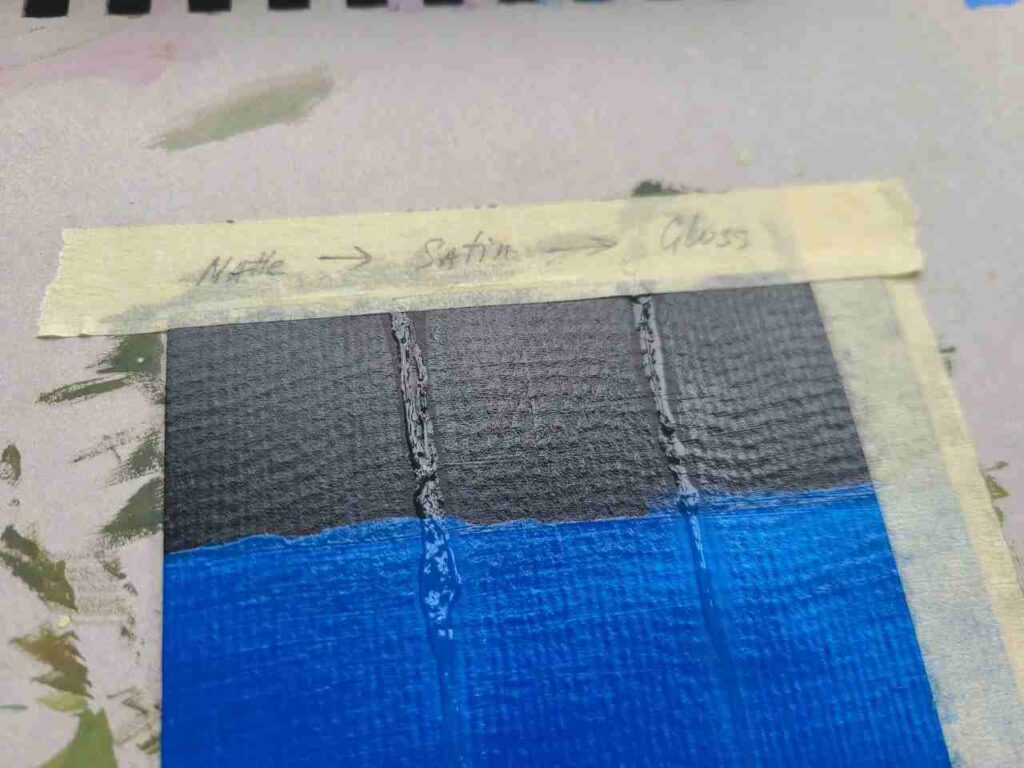
Remember the perfectly clean white floor, and it seems bright, brand new, and glossy?
Varnish does the same for your painting. Over time, this is a varnish that still makes your painting looks great, and colors–rich.
To ensure the right level of gloss, just mix matte and gloss finish or use directly gloss varnish.
The matting agent is white and sometimes will leave a milky finish to your paintings. Make sure you mix it properly.Varnish creates a permanent enrichment to the colors. Even if you’ve just finished your painting and it looks great, fresh, and bright, acrylics will dry and lose a bit of their gloss.
You can use acrylic paint with more gloss like Winsor & Newton but only a varnish will make gloss and color saturation permanent.
Many artist, especially who work in photorealistic technique, rediscovered the beauty of their paintings after varnishing.
Read also: 7 Ways How To Make Acrylic Paint Shiny & Glossy
5 – Varnish levels and evens the surface
Every brand and paint has different amount of binder and pigment in it. Some brands create low sheen or extreme sheen paint.
The amount of water you add to dilute paint will also affect its sheen.
Different acrylic mediums also have different shine rates. For example, you mixed paint with matte medium to create some objects and then used extreme sheen white.
As the result, we have uneven surfaces with areas with different shining.
Varnishing will smooth all these differences and create an even and unified look, that we and other people will perceive as something finished and beautiful.
A nice coat of varnish is the easiest and most effective way to make your acrylic painting look great!
6 – Prolong Painting’s Life
Varnish is a key to make our creative heritage last longer.
Once we finish our work we should think about how to make sure it will live a long life, especially if you create it for sale.
As we know varnish protects the acrylic painting from dust, and the environment, and enriches colors but we also apply varnish first, to remove and replace it later. Such an irony, that something is useful because we can remove it!
Removing and replacing varnish can give your painting hundreds of years.
Before applying a varnish make sure you applied isolation coats!Make sure to use compatible acrylic varnishes.
What type of varnish to choose?
Varnish can be removable (which is better) and non-removable (permanent).
They also can be divided based on composition.
Types of varnishes:
- mineral spirit acrylic varnish – tougher varnishes, less permeable (allow less water to get in), more durable, but also can be trickier to apply and smell bad. Varnishes with mineral spirits can be removable with turpentine and are suitable for both acrylic and oil paintings. Before applying varnish with mineral spirit, use isolation coat. Good choice for paintings stored or displayed outside, but excessive for indoor paintings.
- acrylic varnish has a similar to acrylic paint composition – it contains acrylic polymer emulsions that create a strong protective satin or matte finish. Perfect choice for most paintings. Acrylic polymer varnish is also largely available.
- BUT, traditional oil varnishes are great for oil paints but they are no good for acrylic paints. Oil varnishes vs polymer varnishes are historically made from damar, resinand use solvents that can ruin acrylics. This is why moving forward, brands created isolation coating to protect paint itself from interacting with varnish and special polymer varnishes for acrylics that won’t ruin the painting. So no, oil varsnihes can not serve as top coat for your acrylic painting.
- There are also some craft varnishes like Mod Podge (I consider it craft varnish as it basically glue mix) that work great on wood panel, some fabrics and other less traditional surfaces. Most of them are non-removable. Mod Podge comes in saying finish and matter version. For sealing paint on wooden surfaces like furniture people normally use cold wax and polish it with damp cloth, but it doesn’t work for acrylic painting a canvas surface!
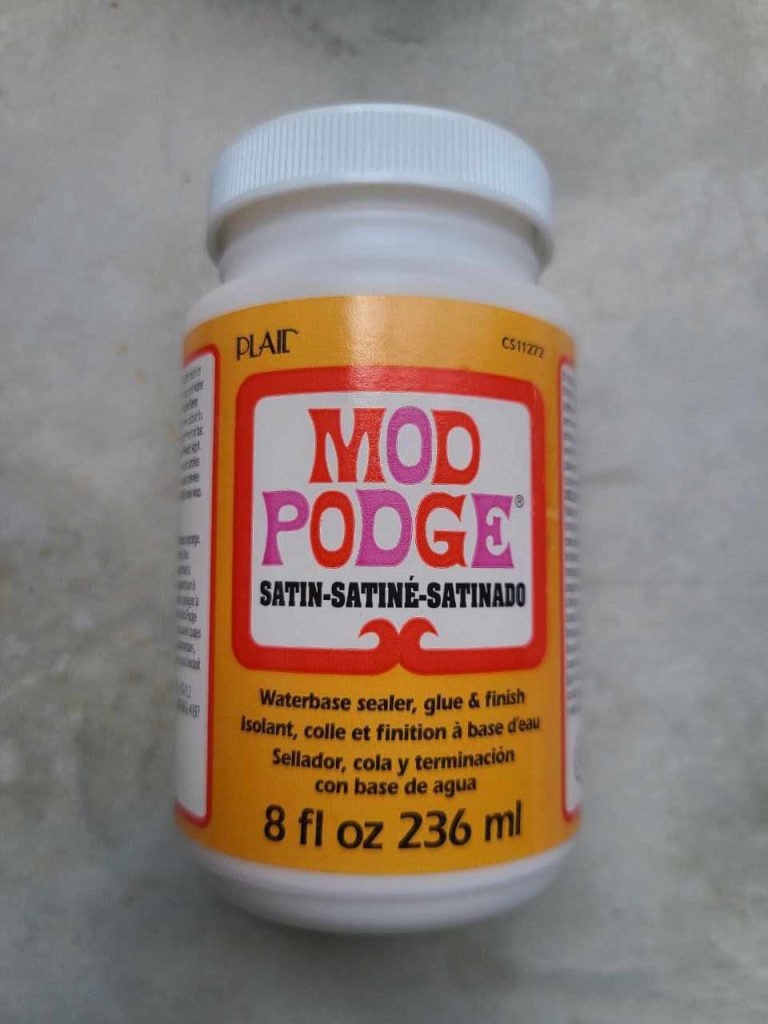
Basically, you need to remove and repeat varnishing every 5-10 years, because varnish collects all dust and dirt and can become yellow over time.
If you’ve chosen permanent varnish you won’t be able to remove it and save your painting for longer years.
If you will still try to remove permanent varnish, you can damage your painting.
Varnish can have matte, satin, gloss, or high gloss finishes:
- Glossy varnish slightly enhances the colors’ vivacity, gives a shiny finish, and reflects light. Dark colors and black work best with glossy finish varnish, semi-gloss, and satin varnishes.
- Satin finish. Satin varnish softens the colors, and offers less sheen; Satin varnishes are the best go-to option, not too shiny, and not too dull. Perfect for beginners. In a separate article on finishes, I compared satin vs gloss choices in varnishes.
- Matte varnish. Matte varnish may make dark colors lighter and has no gloss at all.
To learn more about differences in finishes and their advantages, check my comparisons: Satin vs Matte: Which Paint Makes for a Good Finish?
You can choose any based on your preferences or mix them to achieve the desirable effect.
There are also water and solvent-based varnishes. Solvent-based varnish is a bit harder to use but also creates stronger protection.
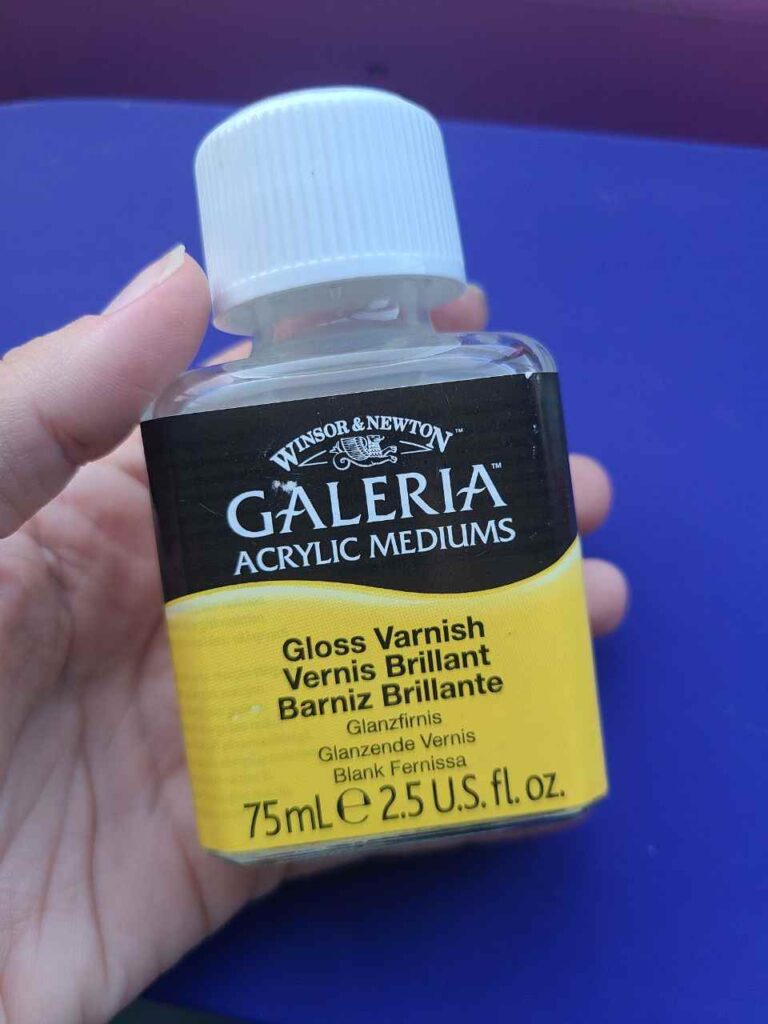
Read more: My Favorite Varnishes For Acrylic Painting On Canvas & Paper
Is it okay NOT to seal an acrylic painting?
It is absolutely normal not to seal or varnish an acrylic painting but it is highly recommended by professional artists.
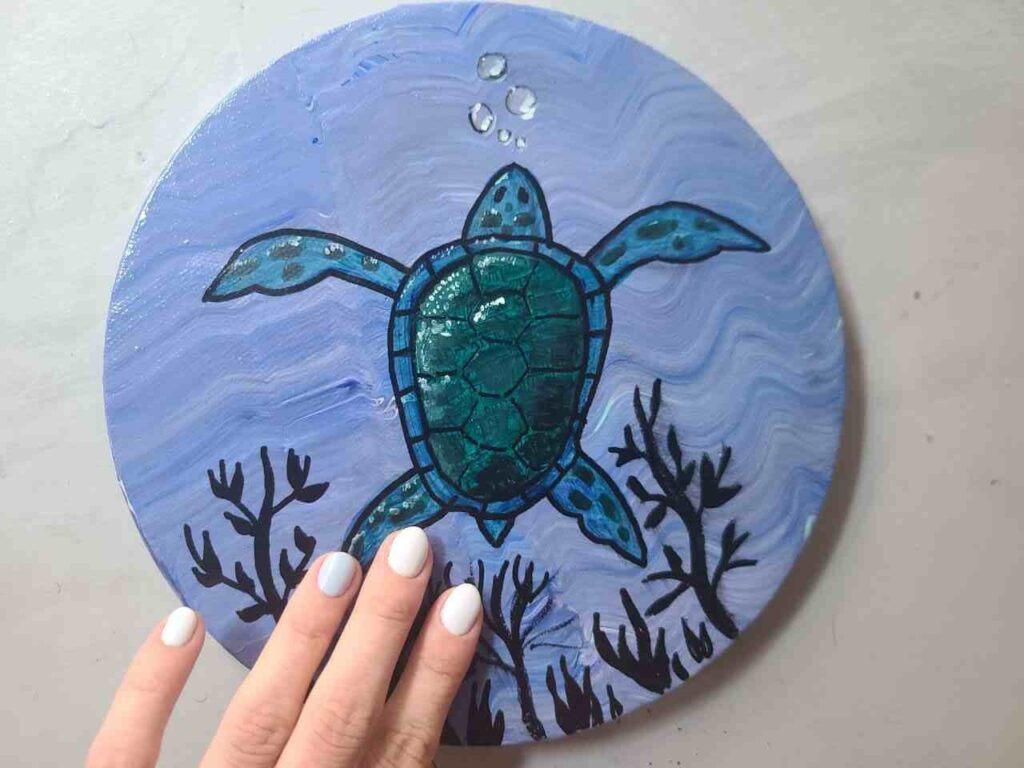
Once the acrylic paint dries it becomes water-resistant so you can still safely clean it.
You can also put your painting under the glass to protect it from dust if you don’t want to varnish it.
Or you can just leave it be! Especially if you think you may reuse the canvas (paint over this painting) or make some changes to this painting.
If you choose to varnish your acrylic painting, please do it in a well-ventilated space, apply the varnish wearing protective gloves, and only on completely dry paint.
If you are using a varnish, apply a few layers, every time wait a few hours until the varnish dries, and only then add a second layer.
FAQ
Can we use wood varnish on acrylic painting?
Even though wood varnish is not made for acrylic painting on canvas, you can use wood protective finishes to seal acrylics.
For example, Minwax finish is a popular option to varnish acrylic painting but it is in fact a polyurethane protective clear coat for wooden furniture.
Can I use oil varnish on acrylic painting?
If you have on oil varnish made of resin, damwar or it says it is a non-removable varnish, do not use it on acrylic painting.
They can yellow or destroy the underlying acrylic paint layer. Opt for polymer or acrylic varnishes for acrylic painting.
Can you paint over a varnished acrylic painting?
Technically you can paint over a varnished acrylic painting in a few cases: when you are doing only small edits or when you prepared the surface.
If you need to paint over a large area, I recommend removing the varnish first.
If your varnish layer is glossy and it is a polymer film (most acrylic varnishes are polymer) then paint won’t stick to eat without preparation and will peel off.
If you painted over a varnished painting, you need to varnish it again.
be stuck in paint or varnish and remove them before applying the next layer with tweezers.
To sum up all the benefits of varnishing acrylic paintings as some final thoughts:
- we have a complete painting with smooth, even sheen (whether you choose satin finish, matter or gloss).
- we did acrylic painting in the most professional way
- the main benefits of varnishing an acrylic painting are of course UV protection, dust and moisture protection, a professional look, and a guarantee of its longer life.
- our painting is easy to clean and it won’t let moisture inside or be affected by changes of temperatures.
- varnished painting will be ok during transportation or storage.
- varnishing is a way to make acrylic painting look shiny if you use gloss medium and gloss varnish.
Whether you will decide to varnish your finished masterpiece or not, it is a great idea to actually know your options and why people seal or prefer not to their paintings.
I can say that now you definitely know more about different varnishes and I hope it helped make a decision on how to protect your own painting.

Masha Eretnova, born in 1991, is a Buenos Aires-based certified teacher, artist, and member of the Professional Artist Association with 20+ years of personal painting journey.
She started painting and drawing very early and is now an international abstract artist and educator passionate about acrylic painting, gouache, and crafts.
Her works are part of international exhibitions and contests, including ArtlyMix (Brazil), Al-Tiba 9 (Spain), Exhibizone (Canada), Italy, and many more.
Besides her artistic pursuits, Masha holds a post-grad diploma in Teaching Film Photography and 2 music school diplomas: piano and opera singing.
